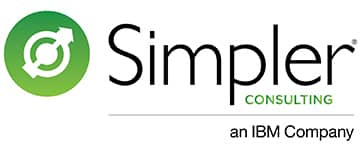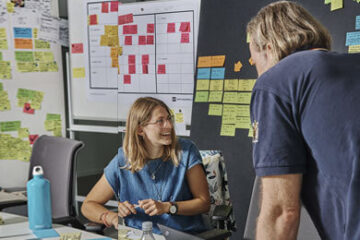How to choose the right tools for your situation
Lean, Agile, and Design Thinking are powerful methodologies.
While their underlying principles have many similarities, their implementation methods have differences reflecting their origins and evolution for their respective applications. In complex situations, it is often logical to adapt and blend the methodologies to best suit your specific purpose.
Origins, Principles, and Evolution
Lean
Lean thinking is focused on optimizing activities and resources to provide more value to the customer and the organization. Its origins are largely credited to Toyota, whose driving need was to compete globally with fewer resources and smaller production runs. Toyota integrated transformational principles from its own textile machinery with other elements as diverse as American supermarkets.
Lean principles first defined in 1990 by Womack in “The Machine that Changed the World” reflected a focus on methods and describe the stages for transforming a value-stream. We have since learned that becoming Lean has more to do with how people are engaged. Underlying principles are now better described as:
- Respect for people
- Rapid-cycle experimentation
- Removal of waste
- Visual control
- Continuous improvement
Agile
Agile is an approach to the development of software and other products that enables delivery of streams of solutions. It emerged from software development where traditional “waterfall” methods did not meet the need for rapid development cycles. Alternative methods emerged, notably Scrum in the early 1990’s employing small, self-organizing teams in time-boxed increments. In 2001, 17 software developers from diverse backgrounds established the 4 values and 12 principles that we now know as the Agile Manifesto. They stress human interaction, working solutions and response to change.
Agile is constantly evolving and finding applications beyond software.
Design Thinking
Design Thinking is a process for creation and problem-solving that stresses the customer’s needs first. Its evolution began with writings on design techniques in the 1950’s. It seeks to deeply understand needs, challenge assumptions, and re-frame problems to deliver innovative solutions.
The most common steps are:
- Empathize Understand real user needs
- Define Use learning to break down and define the problem
- Ideate Use creative processes to find potential solutions beyond the obvious
- Prototype Create scaled-down versions or facades
- Test Test with real people, learn, and iterate
Similarities
People-Centeredness
All three methods have a human-centered approach that engages people and teams, enabling them to do their best work.
Rapid cycles of doing and learning

All three philosophies derive from the scientific method and from the Plan-Do-Study-Act cycle developed by Shewhart and Deming.

Differences

Tools
Many of the individual tools existed decades before the emergence of Lean, Agile, or Design Thinking. The innovation lies in how they have been adapted
and integrated into systems appropriate for their specific purpose. While tools may have similarities, their differences reflect typical applications.
Management Systems
The respective management systems also reflect applications.
Lean Daily Management Systems engage operational staff in continuous improvement with minimal intrusion into daily work.
Agile methodology organizes, focuses, and aligns teams whose work is problem-solving and development.
Design Thinking is a more general approach to design problems. There are many variations and also specific approaches such as described in “Sprint” by Knapp et al.

Adopting and Adapting
The frameworks should be considered as tools to be used for the right job. They are not mutually exclusive, and some jobs will require multiple tools.
Lean can deliver dramatic performance improvement to operations. Lean transformation changes the culture of an organization to one of high-engagement and continuous improvement.
Agile lends itself to development, enabling small groups of developers to deliver streams of working product while rapidly responding to new or changing conditions.
Design-thinking can be applied to processes, systems, equipment, and buildings. It can stand-alone, or within a Lean or Agile environment.
Alignment of principles enables us to blend without creating fundamental tension and ambiguity. The challenge of new jargon and methods can be mitigated by working hard to keep things simple. Use plain English and limit the methods to only what is needed. “The long term ideal might be Scaled Agile, but we are going to start with Scrum”.

At Simpler Consulting, we have successfully employed all three methods. One client needed an innovation and development process. Our overall approach was based on Design Thinking and an innovation framework. We used Lean tools for discovery and problem-solving and transitioned to Agile/Scrum as we moved into definition and design.
Lean, Agile and Design Thinking have each evolved to better serve their original purpose and for broader application.
Like a carpenter’s use of tools, quality depends on choosing the right tools and on the skill and experience of the user. Individual methods are not technically complex, but their nuances and applications must be learned and practiced for optimum results. Few situations are the same as those that spawned the frameworks and it is therefore logical to adapt and evolve, using combinations of methods where appropriate to the need.

Alan Talbot
Executive Consultant
Simpler Consulting, an IBM company
Over a 35-year international career, Alan has held leadership positions in manufacturing and healthcare organizations and has consulted in manufacturing, healthcare, medical education, and local government. Alan holds bachelor’s and master’s degrees in Engineering from Cambridge University and an MBA from Harvard Business School.



